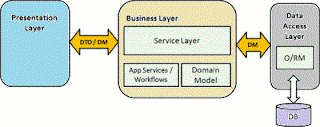Labels
.NET Job Questions
About Java
Absract class
Abstract class
Abstract Class and Interface
Aggregation
ajax
aop
apache ofbiz
Apache ofbiz tutrial
Association
authentication
autocad
basics
batch
Binary Tree
bootstrap loader in java
build
Builder design pattern
C++ Job Questions
caching
CallableStatement in java
certifications
Chain of responsibility Design pattern
charts
check parentheses in a string
Classes
classloader in java
classloading concept
code quality
collage level java program
Composition
concurrency
Concurrency Tutorial
Converting InputStream to String
Core Java
core java concept
core java interview questions
Core Java Interview Questions
Core Java Questions
core java tutorial
CyclicBarrier in Java
data structures
database
Database Job Questions
datetime in c#
DB
Db2 SQL Replication
deserialization in java
Design Patterns
designpatterns
Downloads
dtd
Eclipse
ejb
example/sample code
exception handling in core java
file handling injava
File I/O vs Memory-Mapped
Filter
first program in spring
flex
Garbage Collection
Generics concept in java
grails
groovy and grails
Guice
Heap
hibernate
Hibernate Interview Questions
how-to
IBM DB2
IBM DB2 Tutorial
ide
immutable
Interceptor
Interface
interview
Interview Questions for Advanced JAVA
investment bank
j2ee
java
JAVA Code Examples
Java 7
java changes
java class loading
JAVA Classes and Objects
Java Classloader concept
Java classloading concept
java cloning concept
java collection
Java collection interview questions
Java Collections
java concurrency
Java CountDownLatch
java definiton
Java design pattern
Java EE 5
Java EE 6
Java Exceptions
Java file
Java Garbage Collection
Java generics
Java Glossary
java hot concept
java immutable concept
Java Interface
Java interview Question
java interview question 2012
java interview question answer
Java Interview Questions
Java Interview Questions and Answers
java interview topic
java investment bank
Java Job Questions
java multithreading
java multithreading concept
java new features
Java Packages
java proxy object
java questions
Java Serialization
Java serialization concept
java serialization interview question
java session concept
java string
Java Swings Questions
java synchronization
java threading
Java Threads Questions
java tutorial
java util; java collections; java questions
java volatile
java volatile interview question
Java Wrapper Classes
java.java1.5
java.lang.ClassCastException
JavaNotes
javascript
JAX-WS
jdbc
JDBC
JDBC Database connection
jdk 1.5 features
JDK 1.5 new features Concurrent HashMap
JMS interview question
JMS tutorial
job
JSESSIONID concept
JSESSIONID interview Question
JSF
jsp
JSP Interview Question
JSP taglib
JSTL with JSP
Junit
Junit Concept
Junit interview question.Best Practices to write JUnit test cases in Java
JVM
Linux - Unix tutorial
Marker Interfaces
MD5 encryption and decryption
messaging
MNC software java interview question
musix
NCR java interview question
Networking Job Questions
news
Object Serialization
Objects
ojdbc14.jar
OOP
Oracle
Oracle SQL Query for two timestamp difference
orm
own JavaScript function call in Apache ofbiz
Packages
Palm Apps
patterns
pdf
persistence
Portal
Portlet Spring Integration
Prime number test in java
programs
Rails
Reboot remote computers
REST
Ruby
Sample application
schema
SCJP
security
Senior java developer interviews
servlet3
servlets
session tracking
singleton design pattern
Spring
Spring 2.5 Framework
spring ebook
Spring framework concept
spring MVC
spring pdf
Spring Security
Spring Security interview questions
SQL
SQL performance
SQL Query to create xml file
Sql Query tuning
ssis and ssrs
StAX and XML
string concept
string immutable
string in java
strings
struts
Struts2
Struts2 integration
synchronization works in java
Technical Interview
testing
tips
Tomcat
top
Tutorial
Volatile in deep
Volatile working concept
web
Web Developer Job Questions
web services
weblogic
Weblogic Application Server
websphere
what is JSESSIONID
xml
XML parsing in java
XML with Java
xslt
|
|
Saturday, 27 July 2013
What is the difference between DTO and DAO
DAO is a class that usually has the CRUD operations like save, update, delete. DTO is just an object that holds data. It is JavaBean with instance variables and setter and getters.
A DAO can be thought of as a proxy used by the business tier who is its client to retrieve values from any given resource such as a RDMS, LDAP server, XML repository, OODB, flat files and so forth. Here is how it looks:
your code -> DAO -> JDBC
The DTO, Value Object(VO) is used to expose several values in a bean like fashion. This provides a light-weight mechanism to transfer values over a network or between different application tiers.
DTO will be passed as value object to DAO layer and DAO layer will use this object to persist data using its CRUD operation methods.
The advantage of the DAO layer is that if you need to change the underlying persistence mechanism you only have to change the DAO layer, and not all the places in the domain logic where the DAO layer is used from. The DAO layer usually consists of a smaller set of classes, than the number of domain logic classes that uses it. Should you need to change what happens behind the scene in the DAO layer, the operation is somewhat smaller, since it only affects the DAO layer.
The advantage of DTO layer is that it adds a good deal of flexibility to the service layer and subsequently to the design of the entire application. For example, if DTOs are used, a change in the requirements that forces a move to a different amount of data doesn't have any impact on the service layer or even the domain. You modify the DTO class involved by adding a new property, but leave the overall interface of the service layer intact.
Labels:
Core Java,
Java Interview Questions
Subscribe to:
Post Comments (Atom)

No comments:
Post a Comment